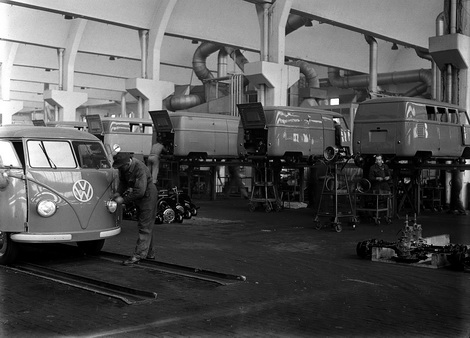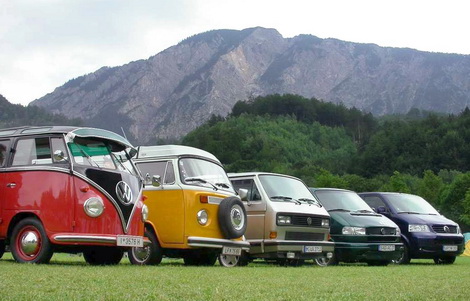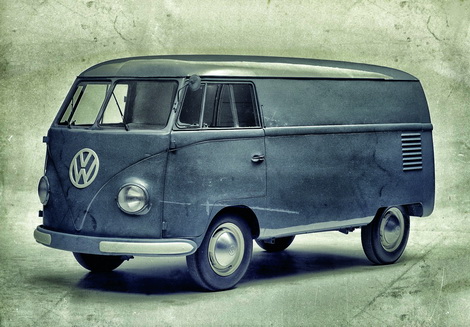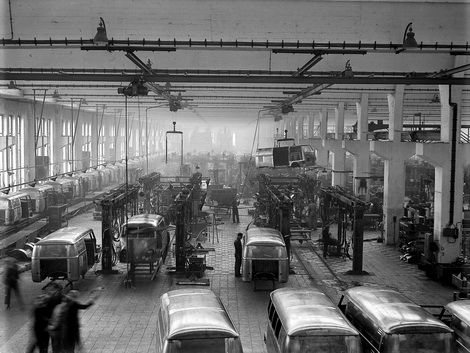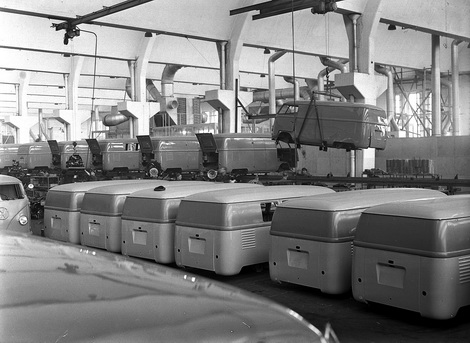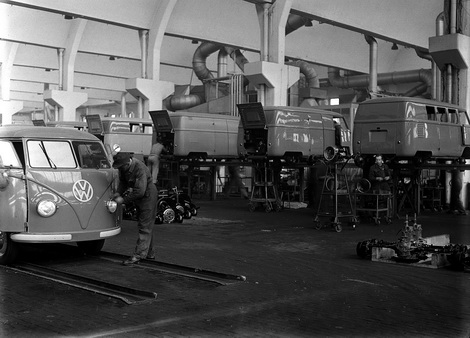It's old enough for a bus pass now, 65 years this month. Of course, it actually is a bus, so having a pass might be something of a moot point. Call it the Bulli, the Transporter, the Type 2, the Kombi - whatever, it's the Volkswagen van and it has become part of the tapestry of our lives. Only the Ford Transit can match it as a commercial vehicle that has achieved anechoic status.
It all began in 1950 when Ben Pon visited the Volkswagen factory. He was the Dutch importer for Volkswagen (which then meant the Beetle and nothing else) and spotted a cut-down Beetle knocking around the factory as an improvised parts carrier. Realising that a commercial van based on Beetle mechanicals could be a money-spinner, Pon pulled out the metaphorical and literal fag-packet sketch and work on Volkswagen's Type 2 began.
Actually it didn't end up using the Beetle's chassis - that proved too weak, so a bespoke ladder-frame was made, though it coincidentally had the same wheelbase as the Beetle, but of course the rear-mounted flat-four engine was the same. Prices in 1950 started at around DM5,800, which runs to an equivalent €11,000 now. Not bad for something so versatile. Only two models were available at first: a Kombi (which had side glass and removable rear seats) or a panel van. Deluxe and Microbus versions were added later and in 1951 came the first of the now-legendary camper vans, originally converted by coach-building company Westfalia. That began a line that continues today with the California model, probably the only van-based vehicle that can compete with a Ferrari for sheer desirability. Well, to some people anyway...
There was a Samba bus (which had skylights in the roof), a flat-bed pickup, a crew-cab and even some that were modified for Deutsches Banhof to run on rails as service vehicles for the national train transport network.
In 1967, the first of the 'Bay-Window' models came along with their curved one-piece windscreen replacing the old (and now more desirable) two-piece split-screen. Astonishingly, this model would stay in production until 2013, when changes to the road safety laws in Brazil consigned it to the scrapheap. By then it was actually running a water-cooled four-cylinder 1.4-litre engine, familiar to anyone who drove a Golf in the nineties...
The square-shaped T3 came along in 1980 and was the last Volkswagen in European production to use a rear-mounted, air-cooled flat-four engine. There was a diesel option too, albeit an in-line four not a flat-four, and in 1983 the first of the water-cooled engines came along. That sounds like a tiny change now, but for Volkswagen, then, it was big.
That square shape was in production until 1990 when it was replaced by the T4, which has stayed with us until now, in much-modified T5 form. You can still have a basic, simple, panel van version that will cost you buttons or you can upgrade and upgrade until you reach the dizzy heights of a California or a 'mobile-office' spec Caravelle, which can both cost as much as a well-specified Mercedes-Benz.
And now, 65 years on, we're on the cusp of a new model. The heavily-updated T6 will look familiar but will incorporate technology that would have made Mr Pon go white with anticipation of optional extra income. Telematics systems will keep fleet managers on top of costs and mileage, a hybrid version is more or less inevitable and perhaps we will see some of the autonomous technology that Volkswagen has spoken of before - such as a system that allows the van to drive itself slowly along behind a driver making door-to-door deliveries.

